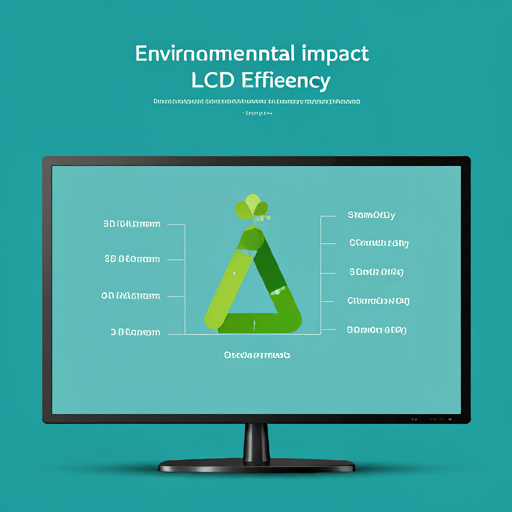LCDs dominates the consumer electronics market starting from the cell phone and then the television, and computer monitor. Environmental Impact of LCDs Brilliant visuals have helped them succeed with high efficiency, however, there’s always an environment aspect to it during the production of LCDs and also in its usage and disposal. All the aspects regarding the effect of LCD on the environment will be discussed in detail by giving importance to positive and problematic issues related to LCDs in this paper.

Manufacture and Resource Use of Environmental Impact of LCDs
The power consumption in the manufacturing of LCDs is high. Some of the materials used in the production of LCDs contain either direct or indirect possible impacts on the environment. Some of the components include liquid crystals, glass substrate, and light sources that generally tend to be made from rare earth elements, which are extremely resource-intensive and also highly energy-intensive Environmental Impact of LCDs.
Most probably during sourcing, these materials will have adverse effects on the environment. For instance, extraction of rare earth metals has a process that contributes to soil erosion, loss of habitats, and contamination of the local water system. Also, the energy used in production is still fossil fuel energy. Another source of greenhouse gas emission and global warming.

Energy Efficiency in Use of Environmental Impact of LCDs
Among its critical environmental benefits, LCDs can be more energy efficient than older technologies such as CRT display technologies. LCDs tend to consume less power especially when static images are involved. In fact, it reduces the consumption of electricity in homes and offices. Low energy means low carbon emissions if electricity is generated from fossil fuels.
Of course, energy efficiency depends on the type of LCD and how they are used. For instance, further development in backlighting, such as LED backlighting technology, increased the energy efficacy of LCDs, making them more eco-friendly at use time.

E-Waste and Challenges in Disposal of Environmental Impact of LCDs
The increase in the potential of technology raises the problem of e-waste, as LCDs, being part of electronic equipment, will eventually have to reach the end of its life cycle, and faulty disposal material leaks into the natural environment. Some dangerous elements of such devices are mercury that is used in some systems of backlighting, lead, and cadmium which can leak into both the soil and water in case of improper disposal.
Other such developments include recycling. For this context, the company is also developing with the recyclable commodity by recycling materials in their products and designing them to be very easy to break down for easy disassembly. Environmental Impact of LCDs However, awareness and participation in e-waste recycling by LCDs are crucial for responsible disposal.
Innovation on Sustainability of Environmental Impact of LCDs
Critical is the rate of new inventions meant to respond to some of the problems associated with LCDs concerning the environmental aspect. Some will focus on biodegradable materials and sustainable production for these materials without any harmful substances. There is investment strategies put in place within companies in circular economy practices that will recycle material and reduce waste within product lifecycle.
Moreover, technology is near the breakthrough in the science of displays: OLED, for example, organic light-emitting diode, and micro-LED, all promising to be more energy efficient and to have longer lifespans than LCDs currently, which might actually mitigate the problem.
Conclusion
The environmental impact of LCDs is tridimensional since the issues connected with manufacturing, usage of energy, and disposal at the end of their lives are multiplied. Even though LCDs consume generally much less energy compared to other older technologies, it should be noticed that the production process of LCDs still owns significant ecological footprints as well since their final disposal carries risks when not managed aptly. Sustainability in production and innovative solutions must remain atop the priority list of consumers, manufacturers, and policy makers since the market of displays is continuously enlarging.
Responsible manufacturing, recycling, and investments in greener technologies will also slice down the environmental footprint of LCDs, paving the way for a future that’s greener for consumer electronics. In any case, it’s way past due to move forward with the balance of technological advancement and stewardship in the quest to navigate the complexities of our times to build the right kind of future.
FAQS
What are the environmental impacts of LCD screens ?
Many LCD screens contain toxic materials such as lead, mercury, and cadmium, which can leach into the soil and water supply if not properly disposed of. These materials have been known to cause serious health problems and can have a long-term impact on the environment.
Pingback: Best 10 DIY LCD Projects